Spending to Conserve Water on California Farms Will Not Increase Supply
Benefits go to agriculture, but won’t help cities.
By Brett Walton
Circle of Blue
A $US 687-million state drought-relief package approved yesterday in California, and a related federal aid program that President Barack Obama announced earlier this month, provide $US 35 million for California farmers to seal leaky pipes, line earthen canals with concrete, and invest in irrigation systems that deliver water more precisely to crops during the deepest drought in the Golden State’s history.
The $US 35 million in emergency spending is designed to improve what technical specialists call “irrigation efficiency,” which has the effect of delivering water with much less waste to achieve the same purpose — in this case for growing food. It’s akin to updating a 20th-century high-volume shower with a 21st-century low-flow showerhead.
But water managers also note that even as the state moves to make better use of shrinking water supplies for California’s thirsty farms, increasing irrigation efficiency is not likely to do anything to make more water available to other users, including industries, cities, and rivers. Again, using the shower metaphor, even with a low-flow showerhead people may be compelled to take longer showers.
“Farmers are several times smarter than politicians, and they have done a good job convincing the government to help pay for more efficient irrigation systems.”
–Bob Stewart, agriculture professor
West Texas A&M University
In fact, say water managers, unless investments in water efficiency are coupled with restrictions on water use, farmers could increase production, put more pressure on rivers, and deplete groundwater reserves that also provide water to cities. The state and federal spending plans come with no such directives on water use.
“Farmers are several times smarter than politicians, and they have done a good job convincing the government to help pay for more efficient irrigation systems. Politicians actually believe that these more efficient systems will make the water last for their children and grandchildren,” Bob Stewart, an agriculture professor at West Texas A&M University, told Circle of Blue. “The fact is that a more efficient system in many cases uses more water, not less.”
Irrigation efficiency is a ratio. It measures how much of the water put on a field is used by the crop compared to how much soaks into the ground and does not aid plant growth. Higher efficiency leads to higher yields, which increases water consumption because extra water is needed to nourish a larger plant. Even though a farmer might draw the same amount of water from a river or an aquifer, he returns less to the source if he is more efficient.
The unintended consequences of irrigation efficiency, well-established by years of scientific study but often ignored or misunderstood by policymakers, holds special relevance today as many of America’s top farming regions cope with devastating droughts.
Investing in irrigation efficiency – fixing leaky canals and pipes, modernizing pumps, improving spray irrigation equipment, installing drip irrigation lines – delivers water more precisely, with much less waste, to fields and orchards. The practices were developed to improve farm productivity and profitability by swelling output per acre. Irrigation efficiency also has the effect of reducing energy consumption by limiting how much water moves through pumps, canals, and pipes.
But irrigation efficiency alone is not a solution to California’s drought. It could prompt farmers to increase crop yields, which means that more water will be used to grow fatter plants, or lead farmers to expand production on empty fields, using the saved water that would have flowed down the river.
“No irrigation system itself can save water,” Freddie Lamm, an irrigation specialist at Kansas State University, told Circle of Blue. “[Saving water] has to be the decision of the producer and society.”
By and large, farm producers and society are going in the opposite direction. In general, water law in the American West, where rights are doled out based on the amount diverted from a river rather than the amount consumed on the farm, is an enormous barrier to ensuring that efficiency does not drain streams and aquifers. And in January, a farm bill amendment to guarantee that federal irrigation subsidies would provide more water for rivers died in congressional negotiations.
Follow the Molecules
Irrigation efficiency, from a system-wide perspective, is not synonymous with conservation.
Consider a field of grapes. An irrigation system with 100 percent efficiency means the sweet fruits take up all of the water and none soaks into the ground. Drip irrigation, which offers small drinks of water directly to the roots, comes close to maximum efficiency. By contrast, flood irrigation, in which the troughs between rows are filled with water, has efficiencies in the 40 percent to 60 percent range, delivering roughly half the water to the crop. The half that is not used is often myopically referred to as “waste.” Sprinkler systems fall between drip and flood irrigation on the efficiency scale.
At a glance, the water not used by the crop appears to be waste, but that assumption ignores the complete water cycle, says David Zoldoske, director of the Center for Irrigation Technology at Fresno State University.
“You have to follow the water molecules,” Zoldoske told Circle of Blue. “The waste typically goes to recharge groundwater, which is available to be pumped by neighbors and by cities.”
Zoldoske cites a case in the southern San Joaquin Valley, a prime farm region in California, where local water supplies depend on wasteful irrigation practices elsewhere.
The Pixley Irrigation District, reliant on groundwater, is sandwiched between two districts that receive supplies from canals. The aquifer beneath Pixley is refilled each year by water seeping through the neighboring sod. If those two districts install more drip systems or line canals with concrete, the farmers in Pixley might be out of business, Zoldoske asserts.
“If there’s more efficiency on either side, it’s going to wipe out Pixley,” Zoldoske said, acknowledging that the water that recharges the aquifer might be of poorer quality, the consequence of farm chemicals and fertilizers absorbed from fields.
Even the U.S. Supreme Court has considered the implications of irrigation efficiency.
In a case decided in May 2011, Montana claimed that Wyoming, by allowing farmers to install high-efficiency irrigation systems, was reducing the amount of water in the Yellowstone River that should have flowed to Montana.
The justices agreed that Wyoming farmers were indeed reducing the volume of water in the Yellowstone. But state water law, they argued, defined water use in terms of the amount diverted from the river, not the amount consumed on the farm. They ruled in favor of Wyoming but noted that this corridor of the legal code lacks clarity.
“We hold that the doctrine of appropriation in Wyoming and Montana allows appropriators to improve their irrigation systems, even to the detriment of downstream appropriators,” wrote Justice Clarence Thomas for the 7-1 majority. “We readily acknowledge that this area of law is far from clear.”
Public Subsidy, Private Benefit
The U.S. government plays a large role in aiding the irrigation transformation.
The U.S. Department of Agriculture spent $US 1.1 billion between 2004 and 2013 to pay for high-efficiency irrigation systems. The Environmental Quality Incentives Program (EQIP) typically foots between 50 percent and 75 percent of the bill, with the farmer paying the balance. The chief goal is not to save water, but to make agriculture as productive as possible, says Rob Sampson, a water engineer with the USDA’s Natural Resources Conservation Service, which oversees EQIP.
“We try to make sure that every drop gets to where it can grow a crop.”
–Rob Sampson, water engineer
Natural Resources Conservation Service
“We try to make sure that every drop gets to where it can grow a crop,” Sampson told Circle of Blue. “We try to make every drop count to grow food to feed the nation.”
U.S. Department of Agriculture officials told Circle of Blue that the agency would place no limits on how farmers could use the water conserved in projects funded by President Obama’s drought package.
Likewise, there are no provisions in the EQIP contracts that tell farmers what to do with the conserved water. Sampson said most research shows that the water is most likely used to grow more crops, land being less a limit to U.S. farm production than water.
That irked Senator Tom Udall, a Democrat from New Mexico. Sen. Udall sponsored an amendment to the 2014 national agricultural policy law that would have prevented farmers from using federally funded irrigation systems to expand their farms. The measure, which failed to gain sufficient support, also would have given priority to farmers who pledged to decrease the water they pump from rivers or aquifers.
“The amendment is important because it would have made the EQIP program better at accomplishing its conservation purpose by helping ensure funded projects are truly resulting in water conservation,” wrote Jennifer Talhelm, Udall’s communications director, in an email to Circle of Blue. “Unfortunately, it was not included in the farm bill because the amendment process was cut short.”
Water Transfers in Southern California Upset the Balance
The nonpartisan office that gives policy advice to the California legislature encouraged Gov. Brown to spend even more on irrigation efficiency in order to increase water conservation.
But a close look at Southern California shows the pitfalls and the diligence required to ensure that irrigation efficiency does not throw an established water cycle out of balance.
More than a decade ago, the cities of Southern California were outgrowing their water supply. Considering their options, the cities turned to farmers, who controlled most of the region’s water.
In 2003, the Imperial Irrigation District, the single largest water user in California, signed an agreement with three municipal water districts serving nearly 20 million people south of the San Gabriel Mountains. In exchange for billions of dollars over several decades, the farmers would transfer up to 303,000 acre-feet (98.7 billion gallons) per year to their urban counterparts.
Farmers accumulated that water for sale in a number of ways. Some fallowed their fields. Others sealed the leaks in their canals, which kept water from seeping into the ground. Still others invested in new irrigation systems that also reduced the water absorbed by the soil. The water that didn’t soak into the ground became available for sale.
But even though irrigation efficiency gains created more water for Los Angeles, the savings came with a cost. The excess water from farm fields was never truly wasted. After flowing below the surface, it drained into the Salton Sea, a saline irrigation sump in the Sonoran Desert that happens to be the largest lake in California and an important bird habitat.
Thanks to efficiency and fallowing, that drainage water now flows into home faucets and out of drains in San Diego. To counteract the environmental damage, the Imperial Irrigation District is required by the state to put billions of gallons from its Colorado River allocation back into the Salton Sea to keep it from shrinking, clear evidence that efficiency has consequences far beyond the farm.
Brett writes about agriculture, energy, infrastructure, and the politics and economics of water in the United States. He also writes the Federal Water Tap, Circle of Blue’s weekly digest of U.S. government water news. He is the winner of two Society of Environmental Journalists reporting awards, one of the top honors in American environmental journalism: first place for explanatory reporting for a series on septic system pollution in the United States(2016) and third place for beat reporting in a small market (2014). He received the Sierra Club’s Distinguished Service Award in 2018. Brett lives in Seattle, where he hikes the mountains and bakes pies. Contact Brett Walton


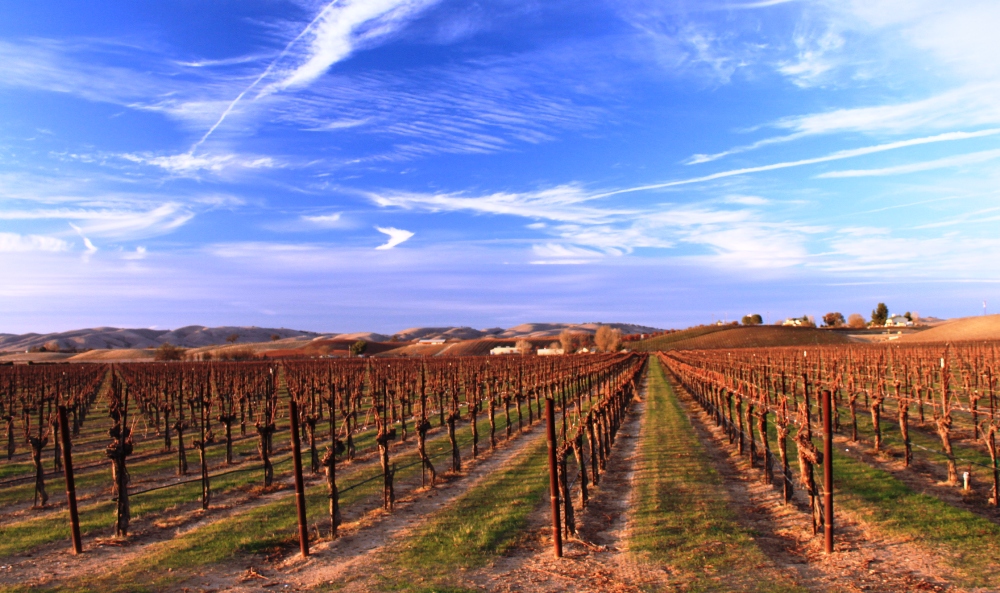

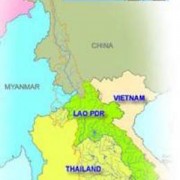

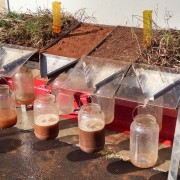

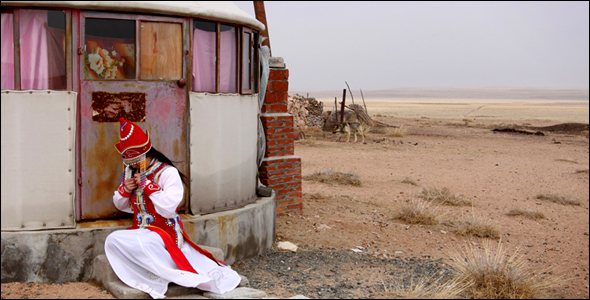



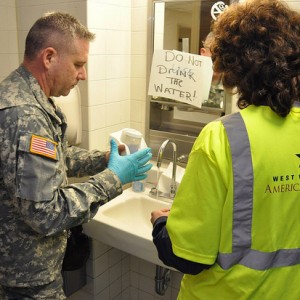
Excellent! This is a very hard point for many people, politicians, and even some prominent water pundits to understand. In some large areas of California, there is an optimal inefficiency of use that allows for recharge of groundwater for later use in droughts.
I congratulate Brett Walton and Circle of Blue for compiling the important ‘pieces’ and ‘facets’ of impacts of some so-called water ‘conservation’ practices and programs on total resource usage and consumption. Some of the water community have long referred to some agricultural ‘water conservation programs’ such as EQIP as “water consumption sustainment programs.” As Mr Walton’s article describes, these programs often help growers do a better job of getting water to plant roots where it can be transpired by plants (and converted to vapor). Fields tend to be more uniform than before, meaning more uniform and sustained water consumption over these fields.
More articles are needed that help people on the street (and policy-makers) ‘visualize’ the complete hydrologic cycle that includes the flow of some unused water (from in-efficient irrigation systems) to ground-water systems for re-use by others at a later date, or the flow of unused water back to streams (from in-efficient irrigation systems). I have often advocated a two-week educational segment in the nation’s sixth grade classes on hydrology, including ground-water systems and interactions with surface water. That segment could help students visualize a number of important concepts: 1) that most of the earth’s terrestrial system is underlain by a saturated ground-water system that has accumulated over the years; 2) that these ground-water systems are effective in ‘capturing’ downward flowing ‘losses’ of water from the surface and effectively turning the flows horizontally towards connected streams. This should make these sixth-graders better and more cognizant stewards of the nation’s water resources, and some day, more effective policy-makers.
Rick Allen, University of Idaho